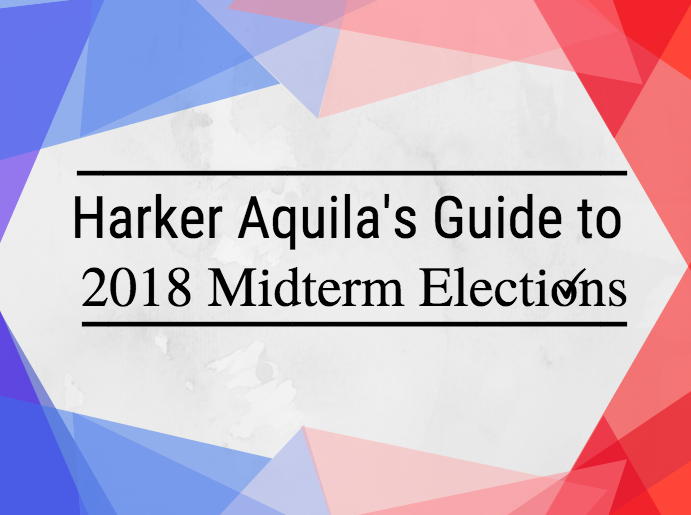Midterms 2018: The race is on
Voters head to polling stations on Tuesday, Nov. 6 to decide the outcome of state elections for Congress representatives, governor and state and local officials. Check out live coverage of the midterm elections below.
November 6, 2018
10:50 p.m.
Democrats secure control over the House with a total of 207 declared seats so far, winning all of the 23 GOP-held seats needed to flip the party majority, according to reports by The Associated Press. Meanwhile, the Senate is forecasted to stay under the GOP’s control, with 51 seats already determined as Republican victories.
One of the most closely watched House districts that the Democratic Party targeted as a vulnerable GOP-held tossup is California’s 48th district, in which Democrat candidate Harley Rouda currently leads by a 0.2 percentage point margin ahead of incumbent Dana Rohrabacher (R.), according to The Associated Press’ results with 31 percent of precincts reporting.
10:17 p.m.
Lieutenant governor Gavin Newsom celebrated his victory at his watch party tonight, defeating challenger Republican businessman John Cox by a margin of 12.6 percentage points in the California governor election, with 30 percent of precincts reporting. Cox called to congratulate Newsom on his victory, Newsom says. As a progressive, Newsom is known for being an early advocate of same sex marriage, universal healthcare and marijuana legalization. Newsom served as the youngest mayor of San Francisco in 100 years from 2004 to 2011 and was elected as California’s lieutenant governor in 2010.
“Now, I can stand before you know that I will have the incredible privilege of serving as your next governor. This victory is really your victory because the future belongs to California,” Newsom said in his victory speech. “It’s been a tough two years, but tonight, America’s biggest state is making the biggest statement in America.”
10:00 p.m.
Incumbent California senator Dianne Feinstein (D.) secured a fifth term after winning a 7.8 percentage point majority over challenger Kevin de León (D.), who currently serves on the California State Senate, as The Associated Press announced in results from 25 percent precincts reporting.
9:40 p.m.
Californian voters rejected Proposition 6, which would have repealed the gas tax increases and vehicle fees that provided funds for road repairs and highway infrastructure, according to Ballotpedia’s report, with 16% of precincts reporting.
9:29 p.m.
Anna Eshoo (D.) will retain her seat as the representative for the 18th congressional district, which includes parts of the Santa Clara, San Mateo and Santa Cruz counties, winning with a 40 point lead over Christine Russell (R.), according to ABC News.
9:23 p.m.
Democratic-Socialist House candidate Alexandria Ocasio-Cortez won a definitive victory in New York’s 14th congressional district against Republican Anthony Pappas, securing a 65.1 percentage point margin, according to results released by The Associated Press with 97 percent of precincts reporting. Ocasio-Cortez will be the youngest woman ever elected to Congress, running a progressive grassroots campaign based on socialist values.
8:21 p.m.
Current Mayor of Tallahassee Andrew Gillum (D.) conceded to former U.S. representative for Florida Ron Desantis (R.) after Desantis appeared to win the Florida governor election in a close race that came down to a one point margin, according to results from Ballotpedia with 99 percent of the precincts reporting.
7:55 p.m.
Georgia’s incumbent governor Brian Kemp (R.) won reelection, defeating Democratic challenger Stacey Abrams, who would have been the first female African American governor in the nation, by a margin nearly 10 percentage points, according to the New York Times.
7:44 p.m.
Republican Ted Cruz was re-elected to Texas’s senate, beating Democratic challenger Beto O’Rourke by a margin of 2.4 percentage points, according to a report published by Ballotpedia, with 30 percent of the precincts reporting. The race, unexpectedly close for a state that has not elected a Democratic senator to Congress since 1993, was one of many closely watched elections this season. The other current senator from Texas is Senate Majority Whip John Cornyn, a Republican.
Upper school teachers on why they voted today
When asked to speak about why they voted in today’s midterm elections, upper school teachers emphasized the importance of casting your ballot.
 “I’ve never been angrier at what I’m seeing in terms of the way this country is heading, or seems to be. Women’s rights are at stake, along with every other marginalized group, and I’ve also never felt so powerless, so I need to take some power back even it means just voting. I have to believe that my vote matters because otherwise I’m going to sink into this pit of despair and cry,” English teacher Brigid Miller said.
“I’ve never been angrier at what I’m seeing in terms of the way this country is heading, or seems to be. Women’s rights are at stake, along with every other marginalized group, and I’ve also never felt so powerless, so I need to take some power back even it means just voting. I have to believe that my vote matters because otherwise I’m going to sink into this pit of despair and cry,” English teacher Brigid Miller said.

“I actually voted early on Sunday, so I saved my sticker so I could wear it with my vote tie. This indicates that Election Day is sort of like a holiday for me, it’s a high holy day. So I was walking back from Starbucks and standing at the stoplight, and one of the homeless people from that area comes riding by on a bicycle, and she slams on the brake and she looks at us and she points to me and my tie and she says, ‘I don’t know how to vote. I’m counting on you people to vote for me.’ And she handed me this flower and then rode away,” history teacher Byron Steven said.
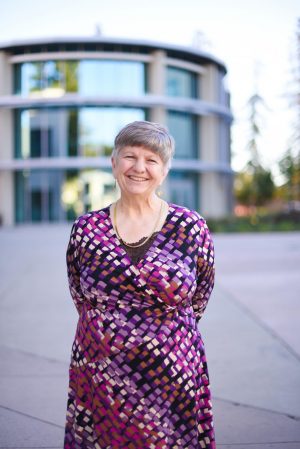
“I vote because it’s our right and I feel it’s our opportunity to speak up, and not only for myself but for other people,” music teacher Susan Nace said.
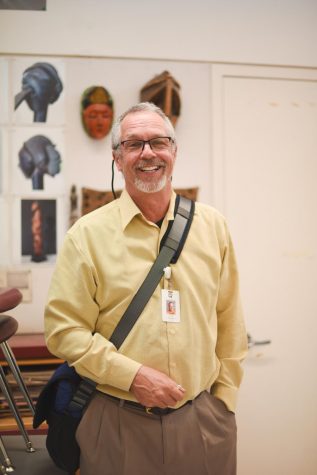
“I voted because I can now. It’s only the second time that I can, because I became American just a few years ago—two years ago—and because I think you should always vote, but especially this time it’s so important,” art teacher Jaap Bongers said.
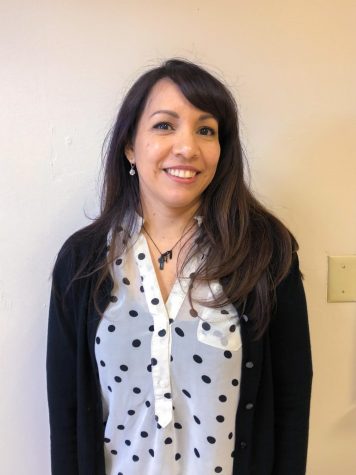 “One, I think the midterm election is important because it raises awareness and gets people interested early on so they can research, talk to people and find out about the candidates and what’s on the ballot, so they’re more informed. I feel that voting is very important. This has been a major discussion in my house because some family members at some point in time after this last big election were very disappointed and felt like their vote didn’t matter. It was a tough one. I think we just have to continue to vote and believe that our vote does count and that we have a right to be able to state our opinion and vote for who we want to try and make a change,” math teacher Jeanette Fernandez said.
“One, I think the midterm election is important because it raises awareness and gets people interested early on so they can research, talk to people and find out about the candidates and what’s on the ballot, so they’re more informed. I feel that voting is very important. This has been a major discussion in my house because some family members at some point in time after this last big election were very disappointed and felt like their vote didn’t matter. It was a tough one. I think we just have to continue to vote and believe that our vote does count and that we have a right to be able to state our opinion and vote for who we want to try and make a change,” math teacher Jeanette Fernandez said.
U.S. Senate Election
Hover above each contested seat to see the states represented.
California’s House of Representatives Election
Hover above each district to see primary polling results.
California’s gubernatorial election
The primary elections on June 5 left the top two candidates — Democratic candidate and Lieutenant Governor Gavin Newsom and Republican candidate John Cox — in the race for the Governor’s seat.
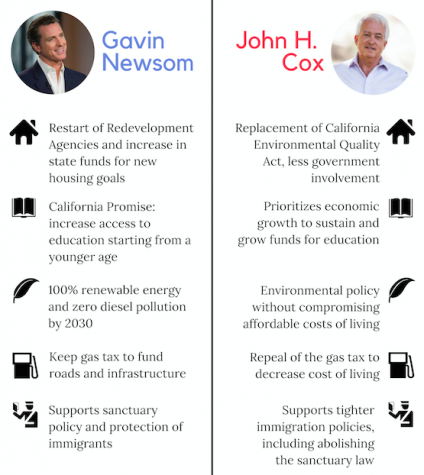
California Governor Candidate: Gavin Newsom
After serving as mayor of San Francisco for seven years and Lieutenant Governor of California for eight years, Gavin Newsom, the 51-year-old Democratic candidate for governor of California, wields the political experience expected of the position he strives for. When current governor Jerry Brown’s fourth term comes to an end, Newsom will face off against Republican John Cox, a previously little-known businessman, in the November midterm elections.
Newsom began his career in politics working for the city of San Francisco in 1996. Starting from the bottom, he served on the city’s Parking and Traffic Commission.
Only a year later, he advanced to San Francisco’s esteemed Board of Supervisors, which consists of 11 individuals each representing a different city district.
Then in 2003, at only 36, Newson was elected the 42nd mayor of San Francisco, the city’s youngest in 100 years. In the following years, Newson achieved repeated success in the political arena. In 2007, he was re-elected as mayor with an overwhelming 72 percent of the vote. Then, in 2010, Newson was elected Lieutenant Governor of California under Governor Jerry Brown and was most recently re-elected in 2014.
Throughout his time in state politics, Newsom has consistently advocated for progressive policies and beliefs. During his tenure as both mayor and Lieutenant Governor, he was an early advocate for same-sex marriage, marijuana legalization, gun control and universal healthcare.
In terms of same-sex marriage, he directed the city council clerk to issue licenses for same-sex marriages in 2004, only a month into his first term.
At the time, this drew criticism from conservatives and Democrats alike and came four years before gay marriages were banned in 2008. For universal healthcare, launched the “healthy San Francisco” program in 2006 which aimed at providing universal health care citywide.
“The big draw to Gavin Newsom for me is the fact that he led the charge for LGBT Americans in San Francisco,” Haris Hosseini (12) said. “This was years before then-Senator Obama endorsed it, years before the Supreme Court decision and years before it entered the national consciousness.”
Now, he maintains his stance on all these key issues. Early last year, he sent a letter to president Trump urging him to not oppose California’s budding recreational marijuana firms. In late August of this year, Newsom announced plans for establishing universal healthcare statewide.
Sriya Prathuri (10) volunteered with the Santa Clara Democratic Party last summer, and she believes her own political perspectives align with those of Newsom.
“Personally, I think Gavin Newsom is a great gubernatorial candidate because he has been advocating for many of the policies we now take for granted for many years,” Sriya said.
In a blue state such as California with the vast majority of elected officials being Democratic and left leaning, one would think the governorship would be squarely in Newsom’s hands. Public polling would confirm this belief. All but one of the statewide polls conducted since early June placed Newsom ahead by double digits. In fact, SurveyUSA placed Newsom ahead by a considerable 29 points in late June. However, Cox has in fact been gaining ground. Polls revealed Newsom’s lead narrowing considerably between June and September. A KFI-NBC poll placed Newsom only five points ahead of Cox in late September.
AP government teacher Carol Green emphasizes the importance of California’s gubernatorial election. She pointed out that state governors often advance to higher-level federal positions such as president of the United States.
“The governor is essentially the head of the executive branch of the state, and since California has such a large economy and population, it is a pretty huge responsibility.”
The next governor of California, countless other public office positions and the pass or failure of numerous state propositions will be determined by ballot on November 6.
California Governor Candidate: John Cox
In this year’s gubernatorial election, Republican John Cox, a multi-millionaire businessman from Rancho Santa Fe in San Diego County faces Democrat and Lieutenant Governor Gavin Newsom.
Relatively unknown compared to his opponent, Cox, 62, a lawyer and an accountant, has unsuccessfully placed three bids before — once for the House of Representatives and twice for the Senate in Illinois. Moving to California and becoming a full-time resident in 2011, Cox advocates the need for a change and a leader with business skills to fix the problems in Sacramento.
“Businesspeople have been elected to office as a governor across this nation to clean up the messes that the politicians have made,” Cox said in an interview with the LA Times.
Raymond Banke (12), a conservative, is ready for change and is looking forward to a new governor in the office.
“I didn’t like how Jerry Brown has allowed himself to stay in office for way longer than is allowed by making loopholes around laws about how long a governor is able to stay,” he said.
Cox’s central message to the voters revolves around California’s economic situation: rising home prices, rents, gas prices, poverty (approximately 20% of California lives below poverty line) and homelessness.
Even though the Democrats and current governor Jerry Brown in the last seven years have transformed California’s alarming $27 billion budget deficit into a soaring $9 billion surplus, aided by a growing economy and new jobs, California faces a very high cost of living. According to PPIC, likely voters stated economy (18%), immigration (12%), and housing (11%) as the most important issues facing the state.
“I have a vision of this state being affordable and livable,” Cox said in a gubernatorial debate at KQED’s studio in San Francisco on Oct. 8. The main tenets of his campaign are to repeal the gas and vehicle license fees, challenge the the sanctuary law, and “clean out the barn” in The Sacramento Bee.
While both candidates are in agreement to build more homes, their approach is different. In the same governor’s debate, Cox stated that he envisions building 3 million homes in the next decade. A real estate investor, Cox promises major reforms to the California Environmental Quality Act (CEQA) which is partially responsible for the housing crisis.
Cox strongly favors enforcement of tighter controls on operational costs of California Department of Transportation and increasing accountability instead of increasing fuel taxes. Chairman of Proposition 6, Cox argues to repeal fuel and vehicle tax increases passed in 2017 to fund repairs of the state’s roads and bridges.
Cox advocates that Proposition 6 is a major source of discontentment amongst voters since it causes undue hardships to lower and middle income families. Yet, according to PPIC report, among likely voters, 52 percent say they would vote no, 39 percent would vote yes and 8 percent are undecided about the measure.
Raymond is disappointed as he hasn’t seen any improvement in the local bay area roads as of yet after the introduction of gas and vehicle tax increase.
“These types of taxes are inherently already quite controversial as they are not taxes that are crucial for example like property taxes or sales tax,” he said. “When they are not being used properly especially to improve roads because that’s the purpose of them, I feel like they are really unnecessary like they shouldn’t be there, they should be lowered or repealed.”
Cox’s stance on immigration is clear with his opposition to the sanctuary law. He believes that California Values Act (SB 54) makes it difficult for law enforcement officers due to non-cooperation policies between the local enforcement officers and federal immigration agents.
“I would get rid of the sanctuary law,” Cox said in the debate. “I think we need to get the Legislature to do that and if they don’t do it, I think we need to get it to a vote of the people.”
According to the LA Times, Cox’s support of the National Rifle Association and second amendment leads him to the viewpoint that “more laws are not going to do the job” on gun control. Moreover, as stated in The Sacramento Bee, his opposition to abortion and skepticism about climate change is not popular in California.
PPIC results show that Newsom continues to maintain a double-digit lead over Cox, although Cox has managed to narrow the gap to a 12-point lead from the 24-point lead Newsom had in July.
“John Cox has been gaining traction and coming from behind in the polls, AP government teacher Carol Green said. “I’m not sure if Cox can obtain enough traction to win in the next couple weeks, as I know [Newsom] is initiating a fresh new push, but I do think that it is going to be closer than was initially expected.”
A break-down of the propositions on the 2018 California ballot
Proposition 1: Allows for $4 billion in general obligation bonds to fund for veterans and low-income residents
Proposition 2: Invests in housing for those with mental illnesses
Proposition 3: Allocates $8.9 billion for infrastructure projects including water supply, sustainability and wildlife
Proposition 4: Finances $1.5 billion for children’s hospitals
Proposition 5: Allows for homeowners over 55 years old to save on property taxes when moving to a new home
Proposition 6: Repeals fuel and vehicle tax recently passed, decreasing funds for road and highway infrastructure
Proposition 7: Allows legislature to change daylight savings time with two-thirds vote
Proposition 8: Requires kidney dialysis clinics to pay rebates and have revenues limited by a formula
Proposition 9: Removed from ballot
Proposition 10: Allows counties and cities to decide rent controls and other jurisdictions on residential property
Proposition 11: Requires ambulance service providers to remain “on-call” while taking breaks
Proposition 12: Requires conditions for confining farm animals, prohibits sale of animal products not in line with these requirements
Check out the official voter guide for more information.
For more information, check out these resources:
VoteSure: California Secretary of State’s official list of nonpartisan election resources
Ballotpedia: Nonprofit and nonpartisan encyclopedia containing information on candidates on the ballot
Voter’s Edge California: Nonprofit and nonpartisan project between Maplight and the League of Women Voters of California with in-depth information on what’s on your ballot
